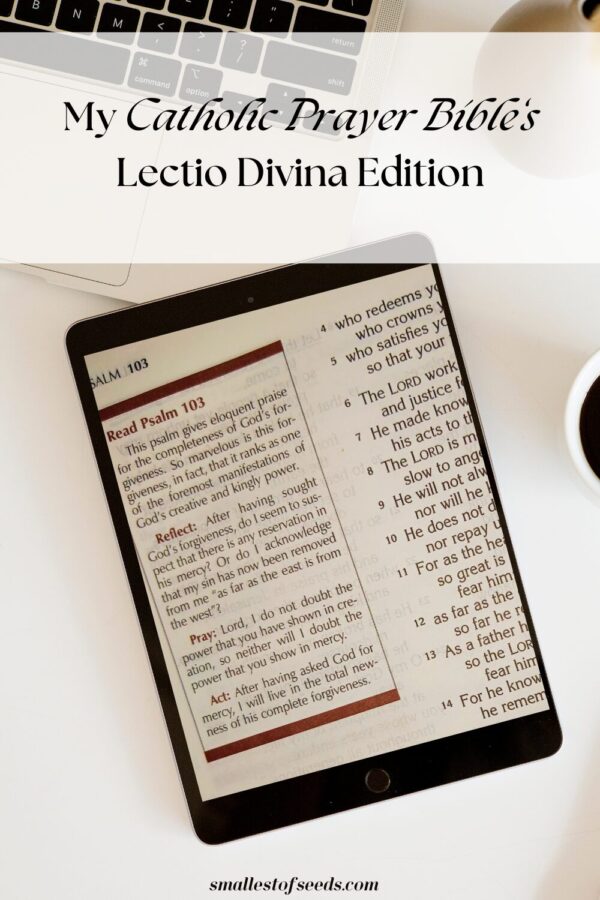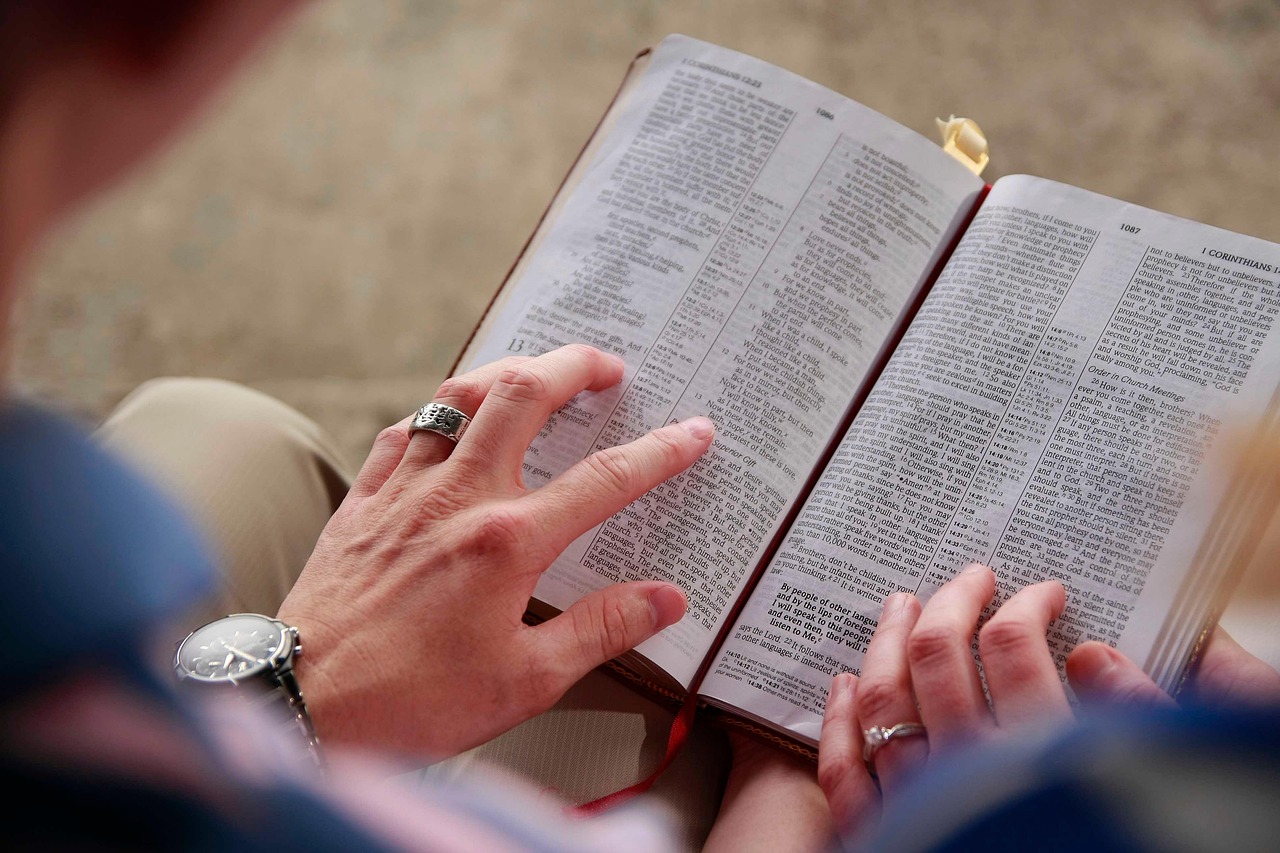What is Lectio Divina and how can it help you really soak in God’s Word?
Surely, you’ve heard it.
The “Read your Bible daily” suggestion when you’re just starting out on your faith journey. And no matter how often it’s said, it’s worth saying again: Read your Bible daily.
If you’re like me, and you’d like a little help navigating the holy library of God’s word, then this is the post for you! Because today, we’ll delve into one of the most ancient and most transformative of all Bible reading practices – the Lectio Divina.
Lectio Divina is not a method of scholarly Bible study. It is a way to let Scripture speak to us.
If you’re looking for a way to read Scripture that is intensely personal and reflective, that will help you grow your faith, then this is definitely one of the best ways to dig deep into the Word!
A time-tested practice
Not a fan of history? Jump directly to how to practice Lectio Divina.
Simple, but powerful, Lectio Divina (Latin for “divine reading”) has deep roots:
- The early Church Fathers began practicing slow reading of Scripture in the first few centuries itself. They were looking not just for information but for a way to seek God through His Word.
- In the 6th century, St. Benedict of Nursia listed this practice in his Rule for Monks, emphasizing reading Scripture slowly and prayerfully so that it really entered the heart of the reader.
- Passed down through the centuries, Lectio Divina entered ordinary Catholic homes after Vatican II. This is when lay readers of Scripture began delving into it.
What was once practiced in ancient monasteries is now part of the small Christian community meetings in my little parish in Mumbai!
Ancient and modern forms
Over time, a few different forms of Lectio Divina have emerged. The two most common are the original ancient form and the modern model.
The original (and still-used) ancient form
The most widely practiced form is described in the 12th century book The Ladder of Monks by the Carthusian monk Guigo II:
- Read (lectio)
- Meditate (meditatio)
- Pray (oratio)
- Contemplate (contemplatio)
The modern model
Although the original model has stood the test of time and is widely practiced today, the 20th century added some “action” to it.
Literally.
My Catholic Prayer Bible published by Paulist Press, for example, lists these 4 steps:
- Read
- Reflect
- Pray
- Act
The American Bible Study recommends adding “Act” as a fifth step after Contemplate. In essence, both variations invite us to let our reading and contemplation of the Word of God change the way we live.

How to practice Lectio Divina
Ready to pray your way through God’s Word? Find a quiet time and place, and follow this simple guide that combines the ancient and modern approaches:
Step into a closer walk with God through Lectio Divina!
Slow down, read, and pray with God’s Word. Download a beautiful PDF of 20 curated passages for Lectio Divina, as well as the step-by-step guide to the ancient practice.
How to choose a passage for Lectio Divina
Any passage (from a few verses to an entire chapter) can be used to pray through the Word in this way. But here are a few suggestions to get you started:
- Pick the gospel of the day. (Refer to the Universalis site or app to find the day’s readings.)
- Start with the Gospels.
- Choose a Psalm.
- Or start with this curated list of 20 passages that can help you build the Lectio Divina habit.
The heart factor
Lectio Divina goes beyond an intellectual study of Scripture. It takes us into prayerful listening. It is a way to meet the Living God through His Living Word.
I first stumbled upon Lectio Divina when I was trying to bridge the mind-heart gap. The gap between knowing God and loving Him. And this simple yet profound ancient tradition gave me new eyes to see the Word, in a way that cut right through every layer of knowledge and went straight to my heart.
That’s why ancient or adapted, I love Lectio Divina.
If you haven’t tried it yet, give it a go. And let the Author and Perfecter of our faith meet you in His Word.
In faith,

Indeed, the word of God is living and effective, sharper than any two-edged sword, penetrating even between soul and spirit, joints and marrow, and able to discern reflections and thoughts of the heart.
Hebrews 4:12 (NABRE)

